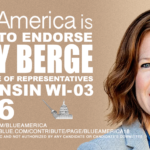“Now we’re all here together tonight. And we’re being human once again. F*ck that Covid sh*t.”
Smash Mouth Lead Vocalist Steve Harwell, 2020 Sturgis Concert
A new study (The Contagion Externality of a Superspreading Event: The Sturgis Motorcycle Rally and COVID-19) attempts to provide some data on the effects of a super spreader event the size of the Sturgis motorcyle rally. The numbers and the costs are staggering. If you'd care to wade through the data, the graphs and the charts, their study is 63 pages long and can be accessed at the link. Since it's new their findings have not yet been peer-reviewed, to my knowledge. At a glance, certainly looks like a rigorous and serious piece of work though.
via Center for Health Economics & Policy Studies
From the abstract to their study:
Large in-person gatherings without social distancing and with individuals who have traveled outside the local area are classified as the “highest risk” for COVID-19 spread by the Centers for Disease Control and Prevention (CDC). Between August 7 and August 16, 2020, nearly 500,000 motorcycle enthusiasts converged on Sturgis, South Dakota for its annual motorcycle rally. Large crowds, coupled with minimal mask-wearing and social distancing by attendees, raised concerns that this event could serve as a COVID-19 “super-spreader.” This study is the first to explore the impact of this event on social distancing and the spread of COVID-19.
First, using anonymized cell phone data from SafeGraph, Inc. we document that (i) smartphone pings from non-residents, and (ii) foot traffic at restaurants and bars, retail establishments, entertainment venues, hotels and campgrounds each rose substantially in the census block groups hosting Sturgis rally events. Stay-at-home behavior among local residents, as measured by median hours spent at home, fell.
Second, using data from the Centers for Disease Control and Prevention (CDC) and a synthetic control approach, we show that by September 2, a month following theonset of the Rally, COVID-19 cases increased by approximately 6 to 7 cases per 1,000 population in its home county of Meade. Finally, difference-in-differences (dose response) estimates show that following the Sturgis event, counties that contributed the highest inflows of rally attendees experienced a 7.0 to 12.5 percent increase in COVID-19 cases relative to counties that did not contribute inflows.
Descriptive evidence suggests these effects may be muted in states with stricter mitigation policies (i.e., restrictions on bar/restaurant openings, mask-wearing mandates). We conclude that the Sturgis Motorcycle Rally generated public health costs of approximately $12.2 billion.
We estimate that over 250,000 of the reported cases between August 2 and September 2 are due to the Sturgis Rally. Roughly 19 percent of the national cases during this timeframe. https://t.co/6tCCV6aXYf
— Andrew Friedson (@FriedsonAndrew) September 6, 2020
Some coverage of Sturgis Motorcycle Rally in South Dakota.
















